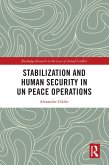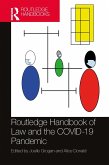The book is divided into three parts. Part I outlines the emergence of stabilization and other trends in peacekeeping practice and outlines an analytical framework of human security. Part II applies the analytical framework to case studies of MINUSMA, MINUSCA, and UNMISS examining issues, such as human rights, empowerment, protection, and vulnerability. In Part III the book draws out several concerns that arise from stabilization mandates, including the militarisation of UN peace operations and the consequences under international humanitarian law, the risks of close cooperation with the host state and engagement in counter-terror activities, and the potential clash between peacebuilding activities and militarisation.
The book will be a valuable resource for academics, policymakers and practitioners working on UN peacekeeping generally, and those specifically looking at stabilization, from the perspective of international relations, international law, peace and conflict studies, security studies and human rights.
Dieser Download kann aus rechtlichen Gründen nur mit Rechnungsadresse in A, B, BG, CY, CZ, D, DK, EW, E, FIN, F, GR, HR, H, IRL, I, LT, L, LR, M, NL, PL, P, R, S, SLO, SK ausgeliefert werden.
Dr Marco Longobardo, Westminster Law School, UK; book review in Journal of Conflict & Security Law
'His book serves as a primer on U.N. peacekeeping operations and what makes a mission a stabilization mission, and on the concept of human security and how it continues to change over time. His findings can help defense planners move beyond a focus on physical protection and civilian harm mitigation to a broader understanding of bottom-up and localized approaches that shift "the objective of security from the state to the individual." Gilder understands the strategic implications of force and cooperation with bad actors, and how such approaches delegitimize military intervention and fail to protect individuals or achieve long-term peace.'
Dr Karen Finkenbinder, deputy associate dean, the Marshall Center; book review in per Concordiam, Journal of European Security and Defense Issues









